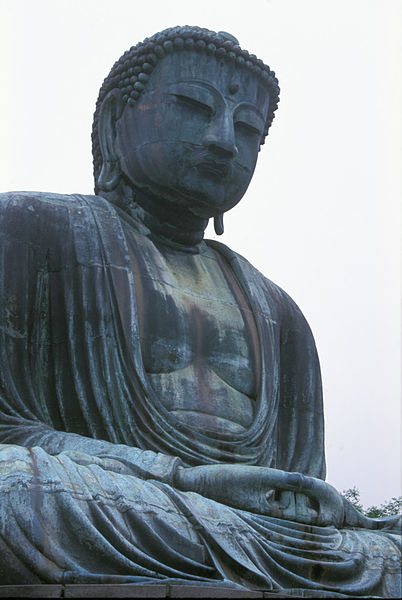
The Buddha's basic teachings are usually summarized using the device of the Four Noble Truths:
- There is suffering.
- There is the origination of suffering.
- There is the cessation of suffering.
- There is a path to the cessation of suffering.
The first of these claims might seem obvious, even when ‘suffering’ is understood to mean not mere pain but existential suffering, the sort of frustration, alienation and despair that arise out of our experience of transitoriness. But there are said to be different levels of appreciation of this truth, some quite subtle and difficult to attain; the highest of these is said to involve the realization that everything is of the nature of suffering. Perhaps it is sufficient for present purposes to point out that while this is not the implausible claim that all of life's states and events are necessarily experienced as unsatisfactory, still the realization that all (oneself included) is impermanent can undermine a precondition for real enjoyment of the events in a life: that such events are meaningful by virtue of their having a place in an open-ended narrative.
It is with the development and elaboration of (2) that substantive philosophical controversy begins. (2) is the simple claim that there are causes and conditions for the arising of suffering. (3) then makes the obvious point that if the origination of suffering depends on causes, future suffering can be prevented by bringing about the cessation of those causes. (4) specifies a set of techniques that are said to be effective in such cessation.
Much then hangs on the correct identification of the causes of suffering. The answer is traditionally spelled out in a list consisting of twelve links in a causal chain that begins with ignorance and ends with suffering (represented by the states of old age, disease and death).
Source 1 and Source 2.
Much then hangs on the correct identification of the causes of suffering. The answer is traditionally spelled out in a list consisting of twelve links in a causal chain that begins with ignorance and ends with suffering (represented by the states of old age, disease and death).
The Twelve Nidānas (causes) describe a causal connection between the subsequent characteristics or conditions of cyclic existence, each one giving rise to the next:
- Avidyā: ignorance, specifically spiritual ignorance of the nature of reality[45]
- Saṃskāras: literally formations, explained as referring to karma
- Vijñāna: consciousness, specifically discriminative[46]
- Nāmarūpa: literally name and form, referring to mind and body[47]
- Ṣaḍāyatana: the six sense bases: eye, ear, nose, tongue, body and mind-organ
- Sparśa: variously translated contact, impression, stimulation (by a sense object)
- Vedanā: usually translated feeling: this is the "hedonic tone", i.e. whether something is pleasant, unpleasant or neutral
- Tṛṣṇā: literally thirst, but in Buddhism nearly always used to mean craving
- Upādāna: clinging or grasping; the word also means fuel, which feeds the continuing cycle of rebirth
- Bhava: literally being (existence) or becoming. (The Theravada explains this as having two meanings: karma, which produces a new existence, and the existence itself.)[48]
- Jāti: literally birth, but life is understood as starting at conception[49]
- Jarāmaraṇa: (old age and death) and also śokaparidevaduḥkhadaurmanasyopāyāsa (sorrow, lamentation, pain, sadness, and misery)
Source 1 and Source 2.
The Basic Four that about covers it all don't they?
ReplyDeleteSometimes we need to look for the simple explainations of life, and accept it.
BAck in the flat lands awaiting our RV Port tomorrow.
Take care.